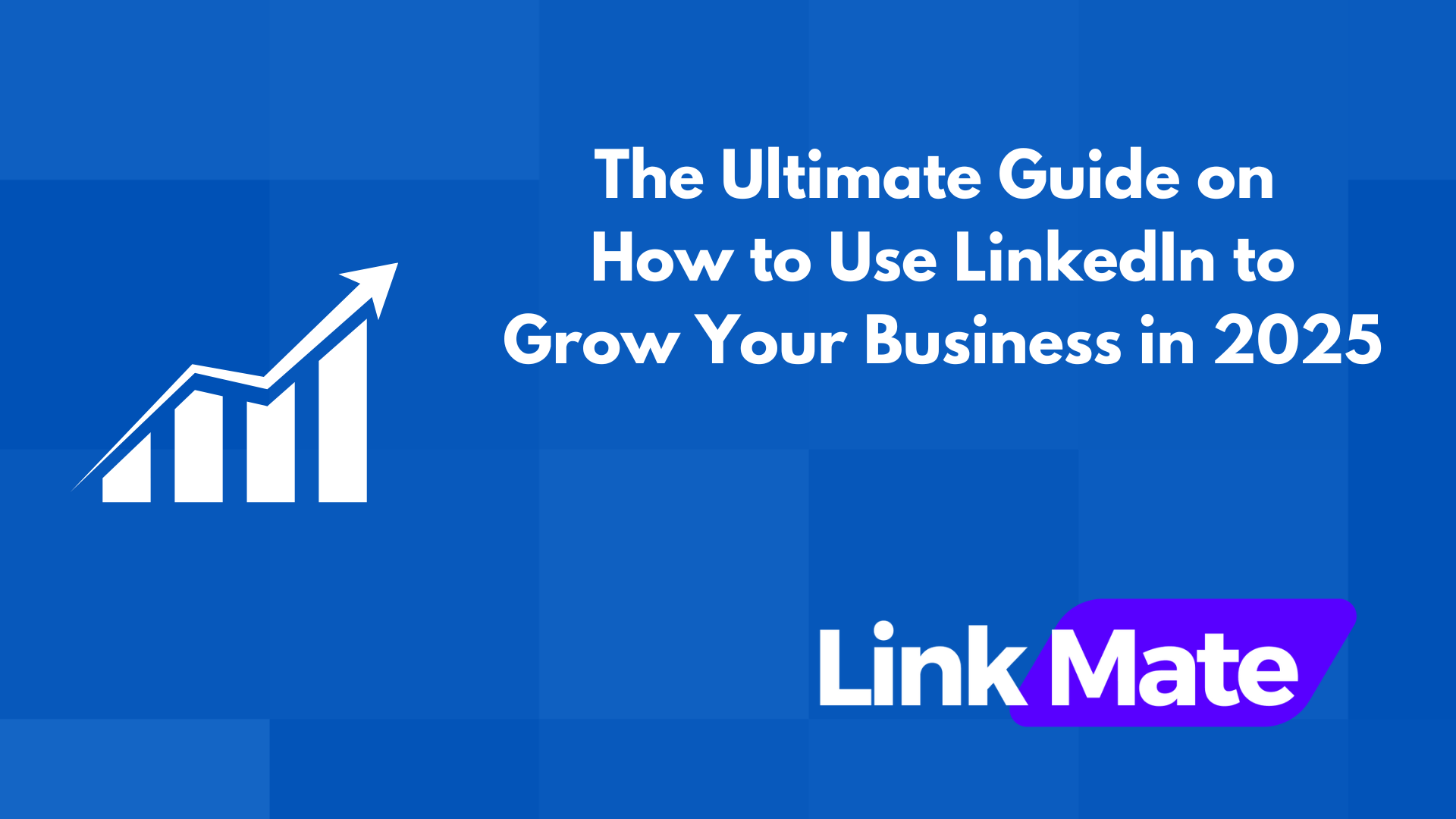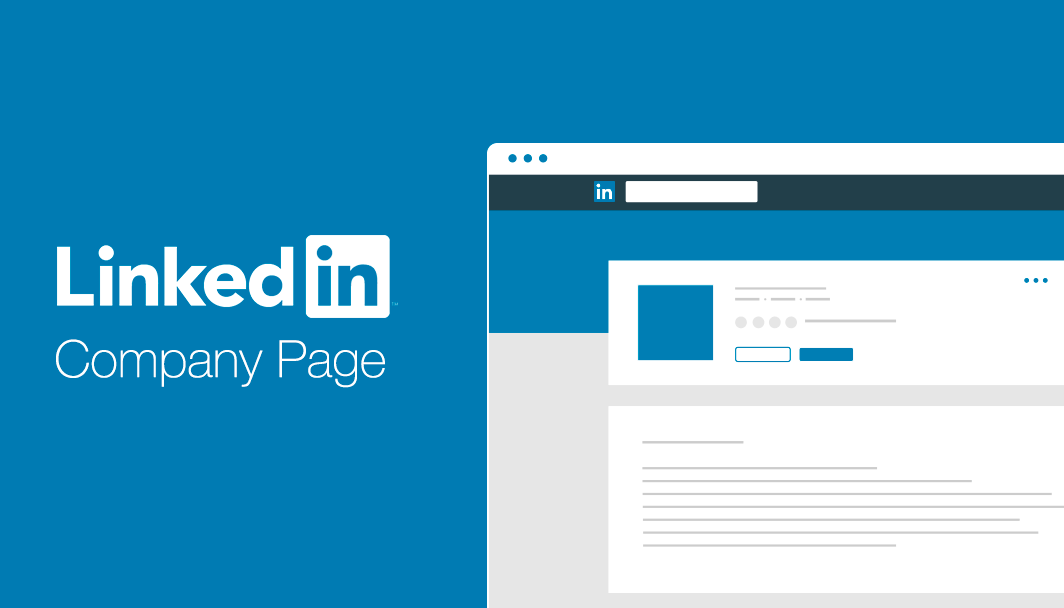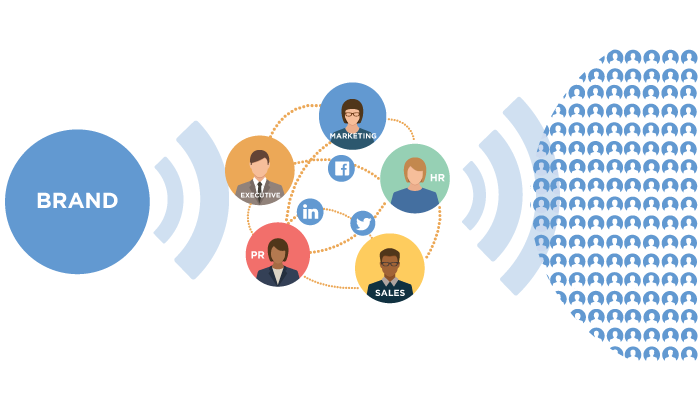The Ultimate Guide on How to Use LinkedIn to Grow Your Business in 2025

Want to know how to use LinkedIn to grow your business effectively? This article offers practical steps to optimize your profile, create engaging content, and connect with industry leaders.
Discover how LinkedIn can boost your brand awareness, generate leads, and drive business growth. Additionally, learn about the benefits of creating and managing a LinkedIn Group for establishing thought leadership and fostering community engagement.
Ready to transform your LinkedIn presence? Start with Linkmate and watch your engagement grow 7x!
Key Takeaways
- LinkedIn is the top platform for B2B marketers, with 96% favoring it for lead generation due to its focus on professional relationships and valuable content.
- Creating and optimizing a LinkedIn business page, along with consistent content creation and engagement, are crucial for establishing credibility and attracting potential clients.
- Warming up leads through personalized interactions and valuable insights significantly improves conversion rates and fosters long-lasting business relationships.
- Utilizing LinkedIn's tools to reach a targeted audience by customizing demographics and focusing on industries of interest is essential for engaging users who prefer valuable information over traditional advertising.
The Importance of LinkedIn for Business Growth

LinkedIn is not just another social network; it is the largest professional networking platform, boasting over 900 million global users. Its unique focus on business relationships sets it apart from other social media platforms, making it a vital tool for professionals. For B2B marketers, LinkedIn is a goldmine, with 96% of them preferring it for lead generation over Facebook and Twitter. No surprise, 40% of B2B marketers consider LinkedIn the top channel for generating leads.
The benefits of using LinkedIn are manifold. It helps improve brand awareness, boost leads and conversions, and increase revenue. Driving traffic, identifying quality leads, and sharing expertise help businesses expand their network and market job openings effectively. Integrating social media tools like LinkedIn buttons and utilizing sponsored updates can significantly increase website visitors by enhancing visibility and engagement. What makes LinkedIn particularly powerful is its ability to provide industry insights that help the audience do their jobs better, fostering meaningful engagement.
A tailored approach is necessary for a successful LinkedIn marketing strategy, given its unique target audience. Unlike other platforms where the focus might be on selling products or services, LinkedIn emphasizes value-driven relationships. This approach not only establishes businesses as industry leaders but also builds trust and credibility, which are crucial for long-term success. More than 50% of traffic to B2B blogs originates from LinkedIn, underscoring its importance in content marketing.
In an era where establishing oneself as a thought leader is vital, LinkedIn provides the perfect platform. Businesses can utilize LinkedIn’s publishing platform to post articles, share insights, and build momentum. With LinkedIn’s algorithm and discovery features, posts can reach a larger audience beyond the immediate network. This not only strengthens the brand but also attracts new connections and potential clients.
Setting Up Your LinkedIn Business Page

Creating a LinkedIn business page is the first step in establishing your brand’s presence on this professional platform. A well-crafted LinkedIn business page can make a significant difference in how your business is perceived. From filling out essential details to optimizing the page for better visibility, each step is crucial.
Once your page is set up, it’s time to join LinkedIn groups and start building your network to grow your business.
Creating Your LinkedIn Company Page
First, an individual account acting as the administrator is needed to create a LinkedIn Company Page. Begin by providing key information like your business name and company website. Don’t forget to include your industry and logo on your company page and ensure that your LinkedIn pages are set up correctly. This foundational step ensures that visitors have all the necessary information to understand your business at a glance.
Consider setting up LinkedIn Showcase Pages to highlight specific initiatives, campaigns, or content. These pages help segment your audience and tailor content to specific interests. For step-by-step guidance, LinkedIn provides video tutorials that can walk you through the process, ensuring you don’t miss any critical details.
Optimizing Your LinkedIn Company Page
Once your LinkedIn page is set up, optimization is key to attracting and engaging visitors. Use a compelling, high-quality banner image that captures the essence of your brand. Ensure the dimensions of the cover image are correctly set to 1128px x 191px for optimal display.
Incorporate relevant keywords into the headline and company description to enhance your search visibility on LinkedIn. Craft your company summary in a way that speaks directly to your audience’s needs, and always include a clear call to action.
Consistency in imagery, colors, and content across your LinkedIn company page and other social media platforms is crucial for cohesive branding.
Claiming Your Custom URL on LinkedIn
Claiming your custom URL on LinkedIn is a simple yet effective way to enhance your professional online presence. A custom URL allows you to personalize your LinkedIn profile link, making it easier to share with others and remember. Here’s how you can claim your custom URL:
- Log in to Your LinkedIn Account: Start by logging into your LinkedIn profile.
- Navigate to Your Profile Page: Click on your profile picture or name to go to your profile page.
- Edit Public Profile & URL: On the right-hand side of your profile page, you’ll see an option labeled “Edit public profile & URL.” Click on it.
- Customize Your Public Profile URL: In the new window, look for the “Customize your public profile URL” option on the right side. Click on the pencil icon next to it.
- Enter Your Desired URL: Type in your desired custom URL. Ideally, this should be your name or a variation of it that is easy to remember and professional.
- Save Your Changes: Once you’ve entered your custom URL, click “Save” to finalize the changes.
Having a custom URL can help you establish a strong online presence, increase your visibility, and make it easier for others to find and connect with you on LinkedIn. It’s a small step that can make a big difference in how you present yourself professionally.
Building Your Network on LinkedIn
Building a network on LinkedIn goes beyond merely connecting with professionals. Utilize LinkedIn’s advanced search to connect with like-minded professionals and industry-specific roles. After making connections, it’s essential to nurture them to grow professional relationships effectively.
Joining groups that match your professional interests can significantly expand your networking opportunities. Participating in LinkedIn Groups allows you to engage with group members without requiring a connection, fostering a broader network. Creating and managing a LinkedIn Group can establish thought leadership, foster community engagement, and generate leads. Engagement with relevant content helps to build authority in your field and can lead to stronger relationships.
Developing Your LinkedIn Marketing Strategy
Developing a LinkedIn marketing strategy is crucial for businesses looking to leverage the platform’s vast professional network. A well-planned strategy can help you increase brand awareness, generate leads, and drive website traffic. Here are some key considerations when developing your LinkedIn marketing strategy:
- Define Your Target Audience: Start by identifying your ideal customer. Create detailed buyer personas that include demographics, job titles, industries, and pain points. This will guide your content and engagement efforts, ensuring they resonate with your target audience.
- Set Clear Goals: Determine what you want to achieve on LinkedIn. Whether it’s increasing brand awareness, generating leads, or driving website traffic, having clear, measurable goals will help you track your progress and adjust your strategy as needed.
- Create Engaging Content: Develop a content strategy that showcases your expertise and provides value to your target audience. This could include articles, videos, infographics, and more. Consistency is key, so consider setting up a content calendar to keep your posting schedule on track.
- Utilize LinkedIn Ads: LinkedIn’s advertising platform offers various ad formats, including sponsored content, text ads, and InMail. These can help you reach a wider audience and drive traffic to your website. Tailor your ads to your target audience for maximum impact.
- Engage with Your Audience: Building relationships is crucial on LinkedIn. Respond to comments and messages, and participate in relevant LinkedIn groups. This not only helps establish thought leadership but also fosters a sense of community around your brand.
By developing a comprehensive LinkedIn marketing strategy, you can maximize your return on investment and achieve your business goals. Remember, the key to success on LinkedIn is consistent, value-driven engagement with your target audience.
Defining Your Social Media Marketing Goals
Defining your social media marketing goals is essential for creating an effective LinkedIn marketing strategy. Your goals should be specific, measurable, achievable, relevant, and time-bound (SMART). Here are some examples of social media marketing goals:
- Increase Brand Awareness: Aim to increase your LinkedIn followers by 20% over the next six months. This can be achieved through consistent posting, engaging content, and active participation in LinkedIn groups.
- Generate Leads: Set a goal to drive 50 new leads to your website each month. Utilize LinkedIn ads and targeted content to attract potential clients and guide them to your landing pages.
- Drive Website Traffic: Work towards increasing your website traffic by 30% in the next quarter. Share valuable content that links back to your website and use LinkedIn’s analytics to track your progress.
- Establish Thought Leadership: Commit to publishing two articles per month on LinkedIn and engaging with at least ten new connections each week. This will help position you as an industry expert and expand your professional network.
By defining your social media marketing goals, you can create a clear roadmap for your LinkedIn marketing efforts and measure your success. These goals will guide your strategy and ensure that your marketing efforts are aligned with your overall business objectives.
Identifying Your Target Audience on LinkedIn
Identifying your target audience on LinkedIn is crucial for creating effective content and engagement strategies. Here are some steps to help you identify your target audience:
- Analyze Your Existing Connections: Start by looking at your current LinkedIn connections. Identify common characteristics such as job titles, industries, and locations. This can give you a good starting point for understanding who is already interested in your business.
- Use LinkedIn’s Analytics Tools: LinkedIn offers built-in analytics tools that provide insights into your audience’s demographics, interests, and behaviors. Use these tools to gain a deeper understanding of who is engaging with your content.
- Conduct Market Research: Go beyond LinkedIn and conduct broader market research to identify your ideal customer. Create detailed buyer personas that include their goals, challenges, and how your product or service can help them.
- Join Relevant LinkedIn Groups: Participate in LinkedIn groups that align with your business goals and target audience. This will help you connect with potential clients and gain insights into their interests and concerns.
By identifying your target audience on LinkedIn, you can create content and engagement strategies that resonate with them and drive results. Understanding your audience is the first step to building meaningful connections and achieving your LinkedIn marketing goals.
Leveraging Content Marketing on LinkedIn

Content marketing on LinkedIn is a powerful strategy to strengthen your brand and attract new connections through social media marketing. By publishing valuable content, you can position yourself as a thought leader and reach a larger audience.
This section will delve into creating valuable content, utilizing LinkedIn’s publishing platform, and engaging with your audience to maximize your marketing efforts.
Creating Valuable Content
Creating valuable content on LinkedIn is crucial for building trust and credibility with your audience. The goals of posting high-quality content include teaching problem-solving and establishing thought leadership. Ensure the content you share is relevant and valuable to your audience.
Varying post lengths keeps content fresh and relevant, encouraging engagement. Diverse content formats, such as videos and infographics, can enhance engagement on LinkedIn. Businesses can experiment with PDF documents to tell a longer story, balancing images and words. Sharing experiences and insights from customer interactions is especially effective for service providers.
Setting up a content calendar can help maintain consistency in posting. Including both quick bold posts and long-form stories in your content plan can diversify your content delivery. By doing so, you can cater to different audience preferences and keep your LinkedIn presence dynamic and engaging.
Utilizing LinkedIn's Publishing Platform
LinkedIn’s publishing platform allows users to share long-form content, significantly increasing brand visibility. Leveraging this platform allows businesses to post articles, share insights, and build momentum. This not only strengthens the brand but also attracts new connections and potential clients through thought leadership content.
Engaging with Your Audience
Active engagement through comments and discussions is vital for building stronger connections on LinkedIn. Leaving thoughtful comments can increase visibility within your network. Responding to comments and DMs on LinkedIn builds stronger connections and showcases brand values.
Engaging with connections through meaningful interactions can significantly enhance lead warming efforts. Interacting with other people’s content is a key way to build a presence on LinkedIn. Commenting on other people’s posts during the first hour after your post can amplify engagement. Engaging authentically can spark dialogue and attract new contacts.
Using Linkmate for Strategic Engagement

Linkmate is an AI-powered engagement tool designed to help businesses strategically expand on LinkedIn. Leveraging industry-specific keywords and personalized interactions, Linkmate enhances connection opportunities and promotes meaningful engagements.
We’ll explore keyword-driven engagement, personalized interactions, and performance tracking and optimization with Linkmate.
Keyword-Driven Engagement
Linkmate leverages industry-specific keywords to engage with relevant posts and connect with target audiences. This LinkedIn strategy not only enhances connection opportunities but also promotes meaningful interactions with key influencers within the industry.
Utilizing industry-specific keywords allows Linkmate to define targeted outreach strategies that effectively connect businesses with potential clients.
Personalized Interactions
Users can customize the prompts and styles of comments in Linkmate, allowing for tailored interactions that reflect their engagement strategy. Engaging with leads through personalized interactions enhances the likelihood of positive responses.
Linkmate’s AI ensures comments resonate with the content being engaged with, fostering more meaningful interactions. This customization aids in creating authentic engagements, making it easier to build rapport and trust with potential clients and partners.
Performance Tracking and Optimization
Linkmate features an analytics dashboard that offers real-time insights into engagement activities, helping users optimize their strategies. Providing performance tracking with detailed engagement metrics, Linkmate refines engagement strategies using real-time data.
Warming Up Leads on LinkedIn

Warming up leads is essential for establishing trust and rapport before attempting to make sales. Building relationships with potential clients, partners, and influencers enhances overall sales performance.
This section will explore why warming-up leads matters, strategies for doing so, and the benefits of warm-up leads.
Why Warming Up Leads Matters
Presenting immediate sales offers without providing value can alienate potential clients on LinkedIn. A focus on immediate sales pitches can deter potential clients; offering valuable insights fosters trust and encourages engagement.
Providing meaningful content before a sales pitch helps businesses establish credibility and trust, making prospects more inclined to engage.
Strategies for Warming Up Leads
Focusing solely on sales pitches often alienates potential clients; incorporating valuable insights can foster better relationships. Personalized connection requests and messages enhance engagement with potential leads. Follow-up messages should acknowledge the recipient’s busyness and include a clear call to action to facilitate engagement.
Warming up leads involves engaging with them through likes, comments, and shared insights over time. Consistent interactions keep a business at the forefront of potential clients and partners’ LinkedIn feeds.
By building rapport and trust, businesses set the stage for long-lasting relationships and higher engagement rates.
Benefits of Warmed-Up Leads
Warm-up leads often result in improved conversion rates, leading to stronger business relationships. Leads that have been warmed up tend to convert at significantly higher rates than cold leads. A warmed-up lead is more likely to consider business proposals seriously, making the sales process smoother and more efficient, helping to generate leads.
Engaging authentically sets the stage for long-lasting business relationships.
Best Practices for Growing Businesses on LinkedIn
To maximize the benefits of LinkedIn for business growth, it’s essential to follow best practices. Consistent posting, employee advocacy, and leveraging LinkedIn ads are key strategies.
This section will delve into these best practices, providing actionable insights to help businesses thrive on LinkedIn.
Consistent Posting and Engagement
A marketing strategy helps maintain a consistent content plan that aligns with audience preferences. A LinkedIn content plan should include topics to post, posting frequency, and goals to achieve. Consistency in posting and engagement helps maintain visibility on LinkedIn.
To maximize visibility, businesses should schedule posts for times when their audience is most active. The best time to post on LinkedIn is identified as Mondays at 1 pm PST. This timing is considered optimal for engagement. Including an image in LinkedIn posts can lead to double the comment rate compared to text-only posts. Using @mentions to tag users or companies can significantly boost engagement on LinkedIn status updates.
Posting diverse content types not only showcases expertise but also warms up leads by creating familiarity. Scheduling posts allows businesses to analyze performance data over time, refining and optimizing their strategy. This approach ensures that all your posts are strategically aligned with your marketing goals, driving consistent engagement and visibility.
Employee Advocacy

Having profiles on LinkedIn enhances employees’ professional representation and connections. Employee profiles should include photos, relevant job history, and professional connections for optimal visibility. Employees need to update their LinkedIn profiles after a Business Page is created to link their profiles to the new page and enhance credibility.
Initiatives like LinkedIn Day, which offers professional photography for LinkedIn profile photos, can help encourage employees to enhance their LinkedIn presence. Using the My Company feature increases employee engagement with posts from coworkers significantly, making them more likely to share organizational content.
This collective effort boosts brand visibility and credibility, driving business growth.
Leveraging LinkedIn Ads
LinkedIn’s sponsored content includes various formats like single-image ads, video ads, carousel ads, and event ads. On LinkedIn, businesses can also utilize ad formats like text ads, spotlight ads, and follower ads, displayed on the right rail. This flexibility allows businesses to tailor their advertising strategies to specific needs and goals.
LinkedIn ads can specifically target job titles, allowing for tailored marketing efforts. Tools like Hootsuite Social Advertising can help manage and analyze LinkedIn ad performance to refine strategies. Tracking is essential for LinkedIn marketing as it helps meet goals and refine strategies for better performance.
Leveraging LinkedIn ads significantly amplifies marketing strategies and helps businesses effectively reach their goals.
Joining and Participating in Relevant LinkedIn Groups
Joining and participating in relevant LinkedIn groups is a great way to connect with your target audience, establish thought leadership, and drive engagement. Here are some tips for joining and participating in LinkedIn groups:
- Research Relevant Groups: Start by identifying LinkedIn groups that align with your business goals and target audience. Look for groups that are active and have a significant number of members.
- Join Groups: Request to join the groups you’ve identified. Make sure your LinkedIn profile is complete and professional, as group admins often review profiles before approving membership requests.
- Participate in Discussions: Once you’re a member, actively participate in group discussions. Share your expertise, ask questions, and provide valuable insights. This will help you build credibility and establish yourself as a thought leader.
- Share Relevant Content: Share content that is relevant to the group’s interests. This could include articles, videos, infographics, and more. Make sure your content provides value and encourages engagement from group members.
By joining and participating in relevant LinkedIn groups, you can establish thought leadership, drive engagement, and connect with your target audience. Active participation in groups can significantly enhance your LinkedIn presence and support your overall marketing strategy.
Common Pitfalls in LinkedIn Marketing
Even with the best strategies, businesses can fall prey to common pitfalls in LinkedIn marketing. Avoiding generic outreach, balancing sales pitches with value, and measuring and adapting strategies are crucial to success. Here are some LinkedIn marketing tips to help you navigate these challenges.
This section will identify these common mistakes and provide tips on how to avoid them.
Avoiding Generic Outreach
Utilizing personalized approaches can significantly enhance response rates compared to generic outreach strategies. Conducting research on the recipient before reaching out can significantly enhance the personalization of your message. Generic outreach can feel impersonal and risk blending into the stream of generic pitches prospects receive.
Personalized communication significantly increases engagement rates.
Balancing Sales Pitches with Value
Immediate sales pitches can backfire as they often come across as pushy and self-centered. Instead, balancing sales pitches with valuable content can foster trust and long-term relationships.
Providing valuable insights and content marketing reinforces the value brought to potential clients or partners, making them more receptive to sales messages.
Measuring and Adapting Strategies
Regular evaluation of LinkedIn marketing efforts is crucial to identify areas for improvement based on performance metrics and audience engagement. Evaluating content and interactions helps adapt strategies effectively. By regularly reviewing performance metrics, businesses can refine their marketing strategies for better results.
This continuous improvement process ensures that marketing goals are met and strategies remain effective.
Summary
In summary, leveraging LinkedIn for business growth involves creating and optimizing a LinkedIn business page, engaging in content marketing, using tools like Linkmate for strategic engagement, and warming up leads before making sales pitches.
Businesses can maximize their LinkedIn presence by consistently posting and engaging, utilizing employee advocacy, and leveraging LinkedIn ads. Avoiding common pitfalls and continuously refining strategies based on performance metrics will ensure long-term success. Now, it’s time to put these insights into action and watch your business thrive on LinkedIn.
Frequently Asked Questions
Why is LinkedIn important for business growth?
LinkedIn is crucial for business growth because it connects you with potential clients and partners while establishing your credibility in the industry. Leveraging this platform can significantly boost your visibility and networking opportunities.
How can I optimize my LinkedIn business page?
To optimize your LinkedIn business page, focus on using high-quality images, integrating relevant keywords, and maintaining consistent branding. Don't forget to craft a compelling company summary with a clear call to action to engage your audience effectively.
What are the best content strategies for LinkedIn?
To effectively engage your audience on LinkedIn, focus on creating valuable content in various formats like videos and infographics, while staying consistent with your posting schedule. This approach will make your content more appealing and connect better with your followers.
How can Linkmate enhance my LinkedIn engagement?
Linkmate can boost your LinkedIn engagement by using tailored keywords and personalized interactions to better connect with your audience and improve your overall performance. It's all about making meaningful connections that matter!
Why is warming up leads important on LinkedIn?
Warming up leads on LinkedIn is essential because it fosters trust and credibility, ultimately boosting your conversion rates and strengthening business relationships. Without this step, you might miss out on valuable opportunities.
